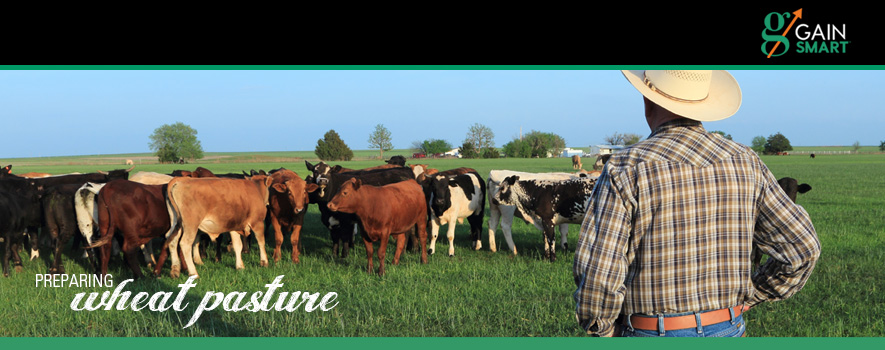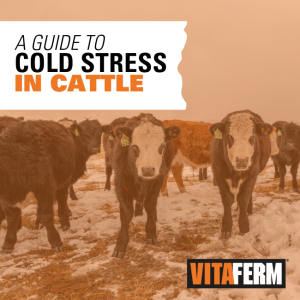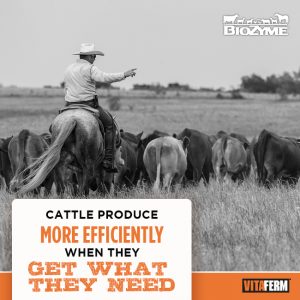
Cattle producers across the Great Plains and throughout the country often rely on wheat pasture to graze their cattle in late fall and through the winter. However, with less than ideal planting conditions in many regions this year, wheat is getting planted later than usual, which will impact the amount of forage available to cattle, especially early on.
Jeff Bedwell, agronomist with Oklahoma Land Run Farmer’s Cooperative and cow-calf producer from Isabella, Okla., said that producers will likely need to make some adjustments as they plan for grazing wheat pastures.
“Things look fairly grim in terms of having a good wheat pasture, but if we have a favorable fall and we have warmer than normal conditions with the moisture we now have, we might actually have good grazing wheat pasture,” he said.
Bedwell offers some advice to producers as they prepare to turn out on wheat.
Consider Stocking Rate
Ideal stocking rate early on, is 400-600 pounds of animal per acre. However, producers need to be aware of their specific wheat conditions and adjust accordingly. Under current conditions particularly in parts of Oklahoma, Bedwell predicts that stocking rates would be closer to 400 pounds per acre, especially early on.
“At this point, I’d say we’ll be a little short on pasture. I don’t anticipate a lot of area that can support the 600 pounds range this year,” Bedwell said.
However, if the animals are going through the pasture too quickly or if the wheat simply doesn’t grow, stocking rate will need to be lowered.
Timing is Everything
A good rule of thumb for turning cattle out on wheat is waiting six weeks following emergence. For example, you plant wheat on Sept. 20, the pasture should be ready for cattle by Nov. 1. Ideally, you’d also want to have a freeze on that wheat so the forage consists of more overall dry matter, and it isn’t so mushy or watered down. A good freeze or dry weather will help with the overall nutrient value of the forage.
“Cattle will perform better on the higher percent dry matter. Drier conditions or a freeze event will help cattle absorb nutrients from the forages, so the passage rate isn’t so great,” Bedwell explained.
Typically, producers will try to graze and harvest their wheat in a dual-purpose scenario, so they need to pay attention to the wheat’s growth and reproduction to make sure the cattle come off the wheat pasture at the right time as not to negatively impact wheat yields. Producers should watch for “tillering” in late February to mid-March, when the wheat matures and moves from a vegetative phase to a reproductive phase. Bedwell suggests removing cattle from grazing following the onset of the first hollow stem – the area right below the head that elongates into the stem.
If the wheat crop isn’t going to be harvested, and used solely as a forage source, the wheat continues to grow and mature, potentially allowing producers to double or even triple the stocking rate.
Keep Cattle Healthy
Perhaps the most important aspect of grazing your cattle on wheat pasture is being proactive to prevent sicknesses like bloat and grass tetany.
Providing your cattle with a high-quality forage supplement is key. Gain Smart® Wheat is a vitamin and mineral supplement for stocker cattle designed to balance basic nutrient needs on wheat or small grain pasture. Like all BioZyme® products, the Gain Smart supplement contains Amaferm®, a natural prebiotic designed to maximize the nutritional value of feed. Amaferm can help cattle make the dietary transitions while converting to grazing wheat pasture. And while Amaferm won’t manage or prevent bloat in cattle, it does manage the reasons cattle bloat, making it an important resource in bloat prevention.
“More people worry about bloat than any other thing when grazing wheat,” Bedwell said. “Bloat tends to occur in the fall, and when the plant comes out of dormancy into more ideal growing conditions in the spring.”
In addition to helping extract nutrients from the wheat pasture while decreasing the bloat risk, Gain Smart can also help increase average daily gain, making it a great investment for producers. Research has shown that mineral supplementation alone will add a quarter-pound of gain per day to stockers on average; when combined with the Amaferm advantage that can easily jump to an additional half-pound of gain over calves not supplemented. That additional gain can help pay for a bloat preventer like poloxalene, an expensive but effective supplement for wheat pasture bloat if it does become an issue during the grazing period.
Grass tetany is a concern for producers who turn their spring calving cows out shortly after they calve due to decreased amounts of magnesium being able to be absorbed from the lush, green vegetative forage. But additional supplementation and keeping a close watch on your cattle can help prevent tetany.
Gain Smart is the smart way to supplement your cattle while grazing wheat pasture. For more information about Gain Smart, contact your Area Sales Manager, http://biozymeinc.com/our-staff.


